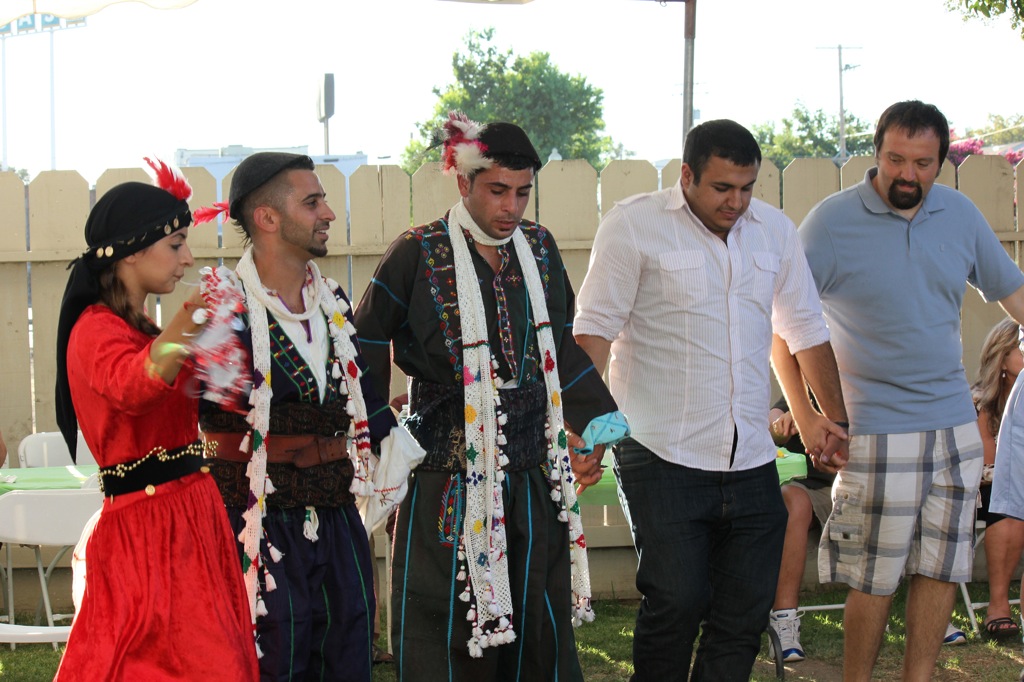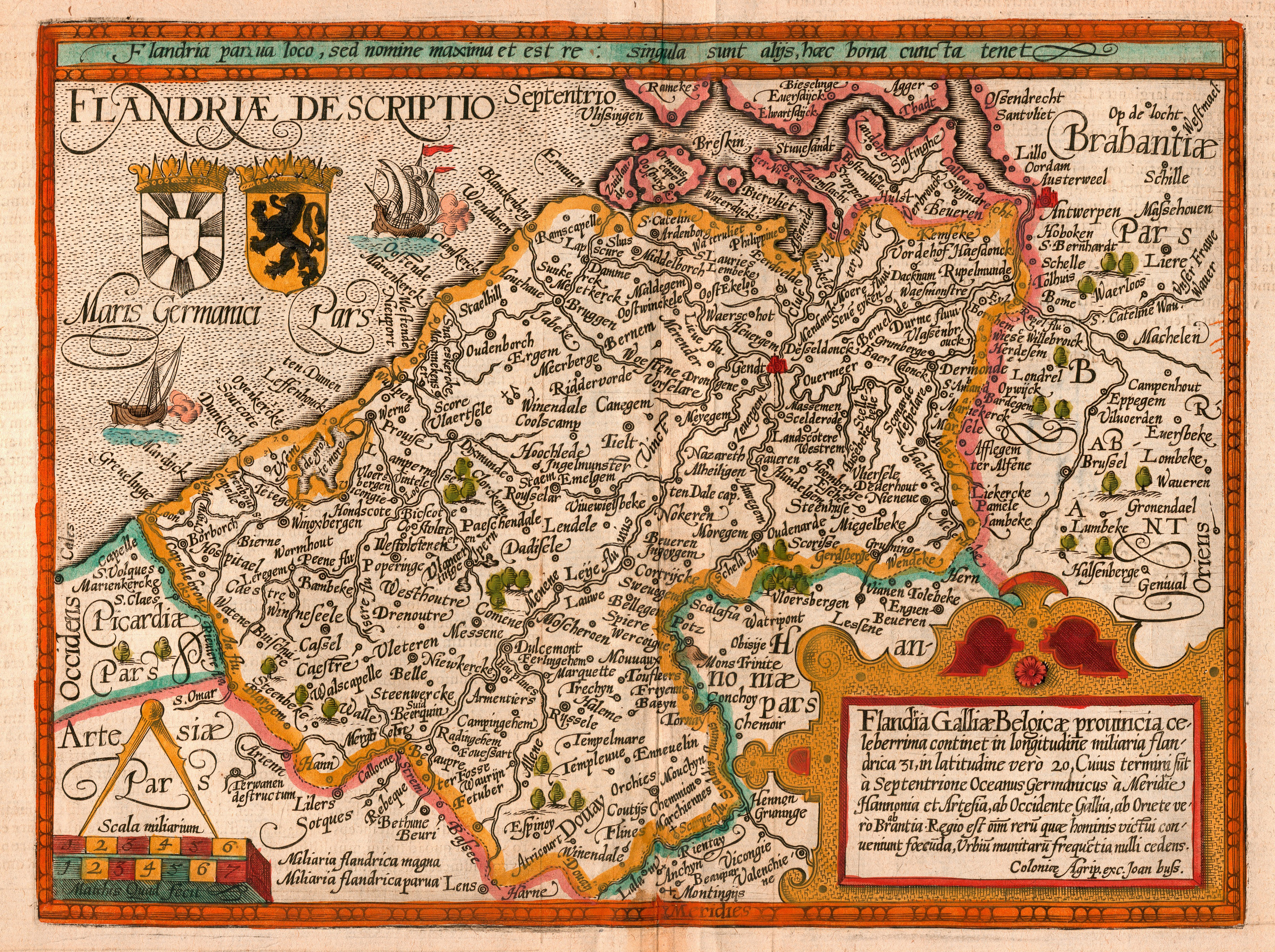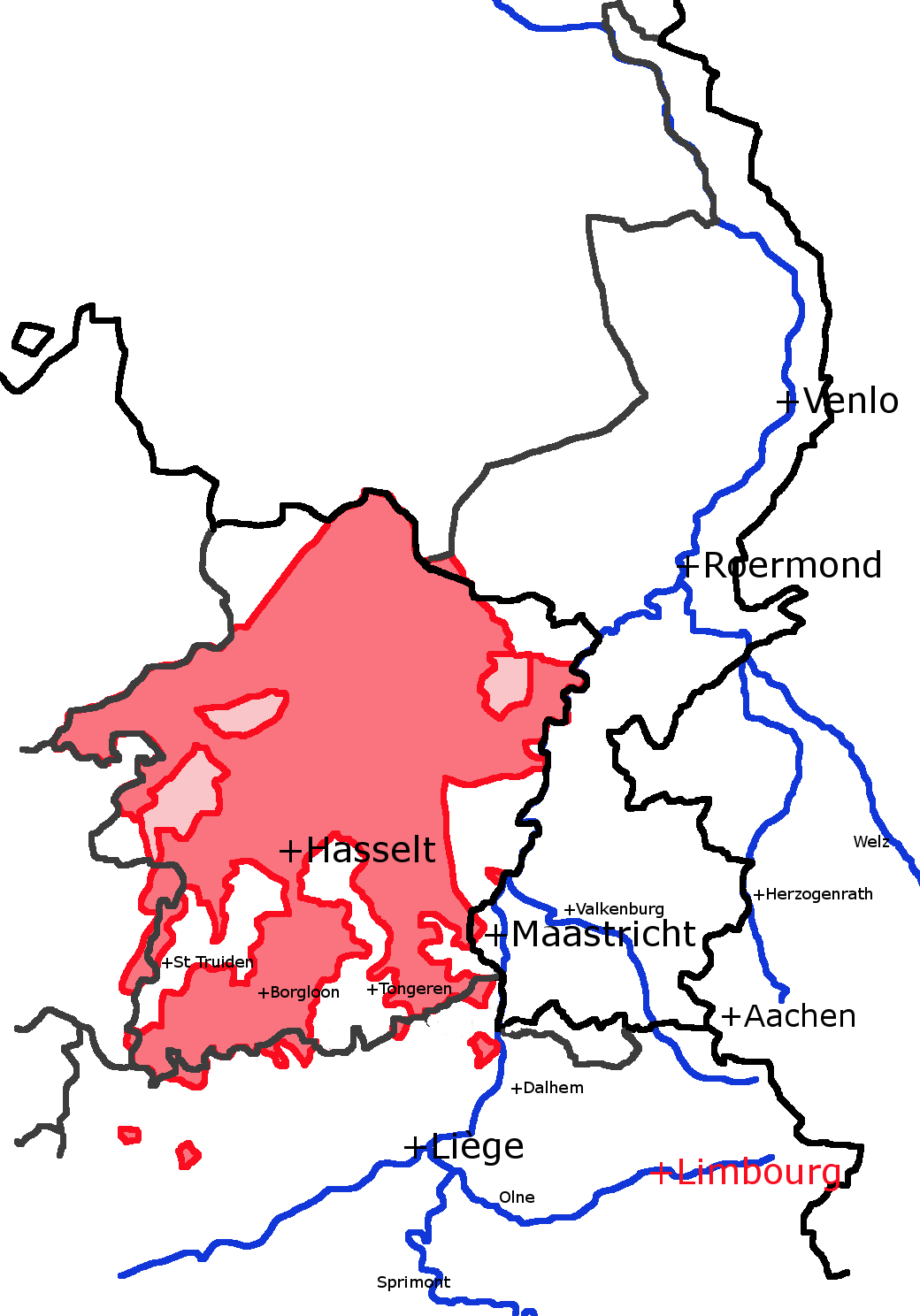|
Flemish Language
Flemish ( ) is a Low Franconian dialect cluster of the Dutch language. It is sometimes referred to as Flemish Dutch (), Belgian Dutch ( ), or Southern Dutch (). Flemish is native to the region known as Flanders in northern Belgium; it is spoken by Flemings, the dominant ethnic group of the region. Outside of Belgium Flanders, it is also spoken to some extent in French Flanders and the Dutch Zeelandic Flanders. Terminology The term ''Flemish'' itself has become ambiguous. Nowadays, it is used in at least five ways, depending on the context. These include: # An indication of Dutch written and spoken in Flanders including the Dutch standard language as well as the non-standardized dialects, including intermediate forms between vernacular dialects and the standard. Some linguists avoid the term ''Flemish'' in this context and prefer the designation ''Belgian-Dutch'' or ''South-Dutch'' # A synonym for the so-called intermediate language in Flanders region, the # An indicatio ... [...More Info...] [...Related Items...] OR: [Wikipedia] [Google] [Baidu] |
Belgium
Belgium, officially the Kingdom of Belgium, is a country in Northwestern Europe. Situated in a coastal lowland region known as the Low Countries, it is bordered by the Netherlands to the north, Germany to the east, Luxembourg to the southeast, France to the south, and the North Sea to the west. Belgium covers an area of and has a population of more than 11.8 million; its population density of ranks List of countries and dependencies by population density, 22nd in the world and Area and population of European countries, sixth in Europe. The capital and Metropolitan areas in Belgium, largest metropolitan region is City of Brussels, Brussels; other major cities are Antwerp, Ghent, Charleroi, Liège, Bruges, Namur, and Leuven. Belgium is a parliamentary system, parliamentary constitutional monarchy with a complex Federation, federal system structured on regional and linguistic grounds. The country is divided into three highly autonomous Communities, regions and language areas o ... [...More Info...] [...Related Items...] OR: [Wikipedia] [Google] [Baidu] |
Flemish Brabant
Flemish Brabant ( ; ) is a province of Flanders, one of the three regions of Belgium. It borders on (clockwise from the North) the Belgian provinces of Antwerp, Limburg, Liège, Walloon Brabant, Hainaut and East Flanders. Flemish Brabant also surrounds the Brussels-Capital Region. Its capital is Leuven. It has an area of which is divided into two administrative districts (''arrondissementen'' in Dutch) containing 65 municipalities. As of January 2024, Flemish Brabant had a population of over 1.19 million. Flemish Brabant was created in 1995 by the splitting of the former province of Brabant into three parts: two new provinces, Flemish Brabant and Walloon Brabant; and the Brussels-Capital Region, which no longer belongs to any province. The split was made to accommodate the eventual division of Belgium in three regions (Flanders, Wallonia and the Brussels-Capital Region). The province is made up of two arrondissements. The Halle-Vilvoorde Arrondissement surrounds Brussels a ... [...More Info...] [...Related Items...] OR: [Wikipedia] [Google] [Baidu] |
Flemish Government
The Flemish Government ( ) is the executive branch of the Flemish Community and the Flemish Region of Belgium. It consists of a government cabinet, headed by the Minister-President of Flanders, Minister-President and accountable to the Flemish Parliament, and the public administration (civil service) divided into 13 policy areas, each with an executive department and multiple agencies. The Flemish Government cabinet consists of up to a maximum of eleven ministers, chosen by the Flemish Parliament. At least one minister must come from Brussels. The ministers are drawn from the political parties which, in practice, form the Coalition government, governing coalition. The Government is chaired by the Minister-President of Flanders, Flemish Minister-President. Ministers head executive departments of the government administration. Ministers must defend their policies and performance in person before the Flemish Parliament. The Flemish Government must receive and keep the confidence of th ... [...More Info...] [...Related Items...] OR: [Wikipedia] [Google] [Baidu] |
Ethnic Group
An ethnicity or ethnic group is a group of people with shared attributes, which they collectively believe to have, and long-term endogamy. Ethnicities share attributes like language, culture, common sets of ancestry, traditions, society, religion, history or social treatment. Ethnicities may also have a narrow or broad spectrum of genetic ancestry, with some groups having mixed genetic ancestry. ''Ethnicity'' is sometimes used interchangeably with ''nation'', particularly in cases of ethnic nationalism. It is also used interchangeably with '' race'' although not all ethnicities identify as racial groups. By way of assimilation, acculturation, amalgamation, language shift, intermarriage, adoption and religious conversion, individuals or groups may over time shift from one ethnic group to another. Ethnic groups may be divided into subgroups or tribes, which over time may become separate ethnic groups themselves due to endogamy or physical isolation from the parent gr ... [...More Info...] [...Related Items...] OR: [Wikipedia] [Google] [Baidu] |
Dialect Cluster
A dialect is a variety of language spoken by a particular group of people. This may include dominant and standardized varieties as well as vernacular, unwritten, or non-standardized varieties, such as those used in developing countries or isolated areas. The non-standard dialects of a language with a writing system will operate at different degrees of distance from the standardized written form. Standard and nonstandard dialects A ''standard dialect'', also known as a "standardized language", is supported by institutions. Such institutional support may include any or all of the following: government recognition or designation; formal presentation in schooling as the "correct" form of a language; informal monitoring of everyday usage; published grammars, dictionaries, and textbooks that set forth a normative spoken and written form; and an extensive formal literature (be it prose, poetry, non-fiction, etc.) that uses it. An example of a standardized language is the French lan ... [...More Info...] [...Related Items...] OR: [Wikipedia] [Google] [Baidu] |
Low Franconian
In historical linguistics, historical and comparative linguistics, Low Franconian is a linguistic category used to classify a number of historical and contemporary West Germanic languages, West Germanic Variety (linguistics), varieties closely related to, and including, the Dutch language. Most dialects and languages included within this category are spoken in the Netherlands, northern Belgium (Flanders), in the Nord (French department), Nord department of France, in western Germany (Lower Rhine), as well as in Suriname, South Africa and Namibia. Terminology ''Low Franconian'' is a purely linguistic category and not used as a term of self-designation among any of the speakers of the Germanic dialects traditionally grouped within it. Within the field of historical philology, the terminology for the historical phases of Low Franconian is not analogous to the traditional Old High German / Middle High German and Old Low German / Middle Low German dichotomies, with the terms Old Du ... [...More Info...] [...Related Items...] OR: [Wikipedia] [Google] [Baidu] |
Flemish Sign Language
Flemish Sign Language (, VGT) is a deaf sign language of Belgium. It is closely related to French Belgian Sign Language, but they are now generally recognized as distinct languages. VGT is estimated to include around 6,000 sign-language users (Loots et al., 2003). History When the first deaf schools were established in Flanders, the teachers were directly or indirectly influenced by the methods used at the Institution Nationale des Sourds-Muets à Paris (and consequently by French Sign Language). They either followed training programs in Paris or in two deaf schools in the Netherlands (Groningen and Sint-Michielsgestel), which were themselves influenced by the Paris school. As with other neighbouring countries, the education of deaf children was strongly influenced by the resolutions that took place at the Milan Conference in 1880. These resolutions banned the use of signs in the education of deaf children in favour of an oral approach. It has been viewed as a dark day in ... [...More Info...] [...Related Items...] OR: [Wikipedia] [Google] [Baidu] |
Flemish People
Flemish people or Flemings ( ) are a Germanic peoples, Germanic ethnic group native to Flanders, Belgium, who speak Flemish Dutch. Flemish people make up the majority of Belgians, at about 60%. ''Flemish'' was historically a geographical term, as all inhabitants of the medieval County of Flanders in modern-day Belgium, France and the Netherlands were referred to as "Flemings" irrespective of their ethnicity or language. The contemporary region of Flanders comprises a part of this historical county, as well as parts of the medieval Duchy of Brabant and the medieval County of Loon, where the modern national identity and Flemish culture, culture gradually formed. History The sense of "Flemish" identity increased significantly after the Belgian Revolution. Prior to this, the term "" in the Dutch language was in first place used for the inhabitants of the former County of Flanders. Flemish, however, had been used since the 14th century to refer to the language and dialects of both ... [...More Info...] [...Related Items...] OR: [Wikipedia] [Google] [Baidu] |
Zeelandic
Zeelandic (; ; ) is a group of language varieties spoken in the southwestern parts of the Netherlands. It is currently considered a Low Franconian dialect of Dutch, but there have been movements to promote the status of Zeelandic from a dialect of Dutch to a separate regional language, which have been denied by the Dutch Ministry of Internal Affairs. More specifically, it is spoken in the southernmost part of South Holland (Goeree-Overflakkee) and large parts of the province of Zeeland, with the notable exception of eastern Zeelandic Flanders. Dutch versionsZeeuwsor apdf/ref> It has notable differences from Standard Dutch mainly in pronunciation but also in grammar and vocabulary, which separates it clearly from Standard Dutch. This makes mutual intelligibility with speakers of Standard Dutch difficult. Origin In the Middle Ages and the early modern period, Zeeland was claimed by the Count of Holland as well as the Count of Flanders, and the area was exposed to influence ... [...More Info...] [...Related Items...] OR: [Wikipedia] [Google] [Baidu] |
Limburg (Belgium)
Limburg (, ; or ; , ), also known as Belgian Limburg, is a province in Belgium. It is the easternmost of the five Dutch language, Dutch-speaking provinces that together form the Flemish Region, Region of Flanders, which is one of the three main Communities, regions and language areas of Belgium, political and cultural sub-divisions of modern-day Belgium. As of January 2024, Limburg had a population of 0.9 million. Limburg is located west of the Meuse (), which separates it from the similarly-named Netherlands, Dutch province of Limburg (Netherlands), Limburg. To the south it shares a border with the French-speaking province of Liège Province, Liège, with which it also has historical ties. To the north and west are the old territories of the Duchy of Brabant. Today these are the Flemish provinces of Flemish Brabant and Antwerp (province), Antwerp to the west, and the Dutch province of North Brabant to the north. Historically Belgian Limburg is roughly equivalent to the Dutch-s ... [...More Info...] [...Related Items...] OR: [Wikipedia] [Google] [Baidu] |
County Of Loon
The County of Loon ( , ) was a county in the Holy Roman Empire, which corresponded approximately with the modern Belgian province of Limburg. It was named after the original seat of its count, Loon, which is today called Borgloon. During the middle ages the counts moved their court to a more central position in Kuringen, which today forms part of Hasselt, capital of the province. From its beginnings, Loon was associated with the nearby Prince-bishop of Liège, and by 1190 the count had come under the bishop's overlordship. In the fourteenth century the male line ended for a second time, at which point the prince-bishops themselves took over the county directly. Loon approximately represented the Dutch-speaking (archaic ) part of the princedom. All of the Dutch-speaking towns in the Prince-Bishopric, with the status of being so-called " Good Cities" (), were in Loon, and are in Belgian Limburg today. These were Beringen, Bilzen, Borgloon, Bree, Hamont, Hasselt, Herk-de-Stad ... [...More Info...] [...Related Items...] OR: [Wikipedia] [Google] [Baidu] |





